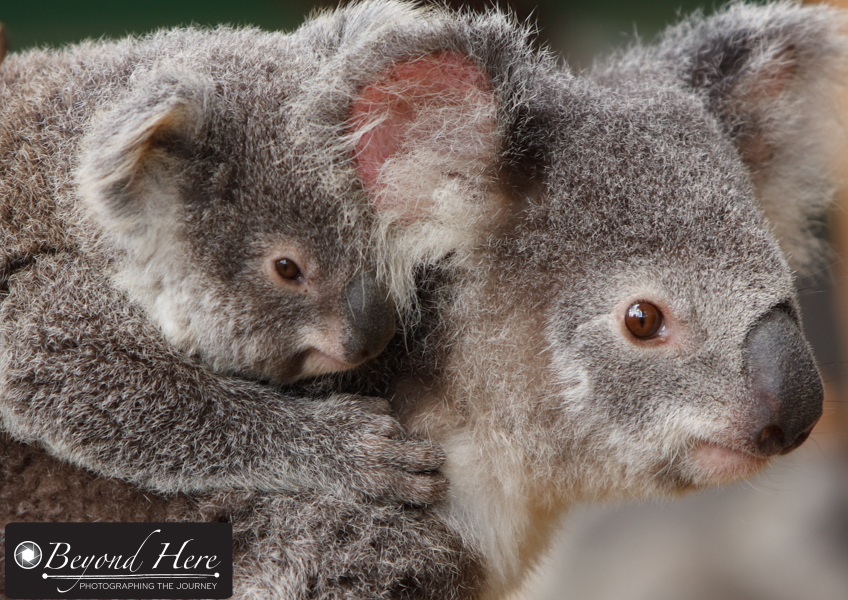Wildlife photography is a hugely popular field for both amateur and professional photographers. Here are 5 tips for more compelling wildlife images.

Look for pairs of animals to add a new dimension to your images.
Tip 1 – Look for Pairs of Animals. Solo portraits of animals can make compelling images, but pairs of animals add a new dimension. There is the relationship between the animals and the interaction between them. Look out for pairs of animals.

Baby animals are great subjects for wildlife photography
Tip 2 – Photograph baby animals. If you want people viewing your images to “ooohh and aaahh” then build a gallery of images of baby animals. There is something about the cute, vulnerability of baby animals – as well as the connection with the parent that is guaranteed to create compelling images. Koalas, like in this image, spend the first few weeks of their life in their mothers pouch. When they become too big, they are transported on their mothers’ back. This period is an ideal time to shoot images which include both mother and baby. Inevitably the baby will be looking small and cute, and mum will be alert in protecting her young one.

Animals in action. A flying fox carrying its baby.
Tip 3 – Look for animals in action. Animals in action, engaging in natural behavior are always more interesting than animals doing nothing. This is particularly why you get very different types of images when you photograph animals in the wild compared to animals in captive environments such as zoos.
In this image, the grey headed flying fox is flying through the air. If you look very closely you can see that it is carrying its baby at the same time. The baby is clinging to its mothers’ chest and will continue to do this until it is large enough and strong enough to fly alone. This image also emphasizes one of the key features of this animal – the spooky vein structure which is visible in the wings. When you are planning your wildlife shoot, consider what feature of the animal you are photographing you want to highlight.

A very low angle makes a compelling image of a common animal
Tip 4 – Shoot from unusual angles. Ducks are very common birds where I live in Melbourne, Australia. In creating compelling images of common animals, look for different angles to shoot from. In this case I lay down at the edge of the lake, to shoot an image from the duck’s eye level. For more about this shoot, please see this post.

The Goodfellows Tree Kangaroo is an endangered species from New Guinea
Tip 5 – Photograph unusual wildlife. Unusual wildlife make compelling images. This image is a Goodfellows Tree Kangaroo. They are native to New Guinea and are now an endangered species. Images like these are compelling, not only for the beautiful colors of the animal, but also because most people will never have seen this animal. Look for unusual wildlife for more compelling images.
Thanks for reading 5 tips for more compelling wildlife images. Good luck with your wildlife photography.



























